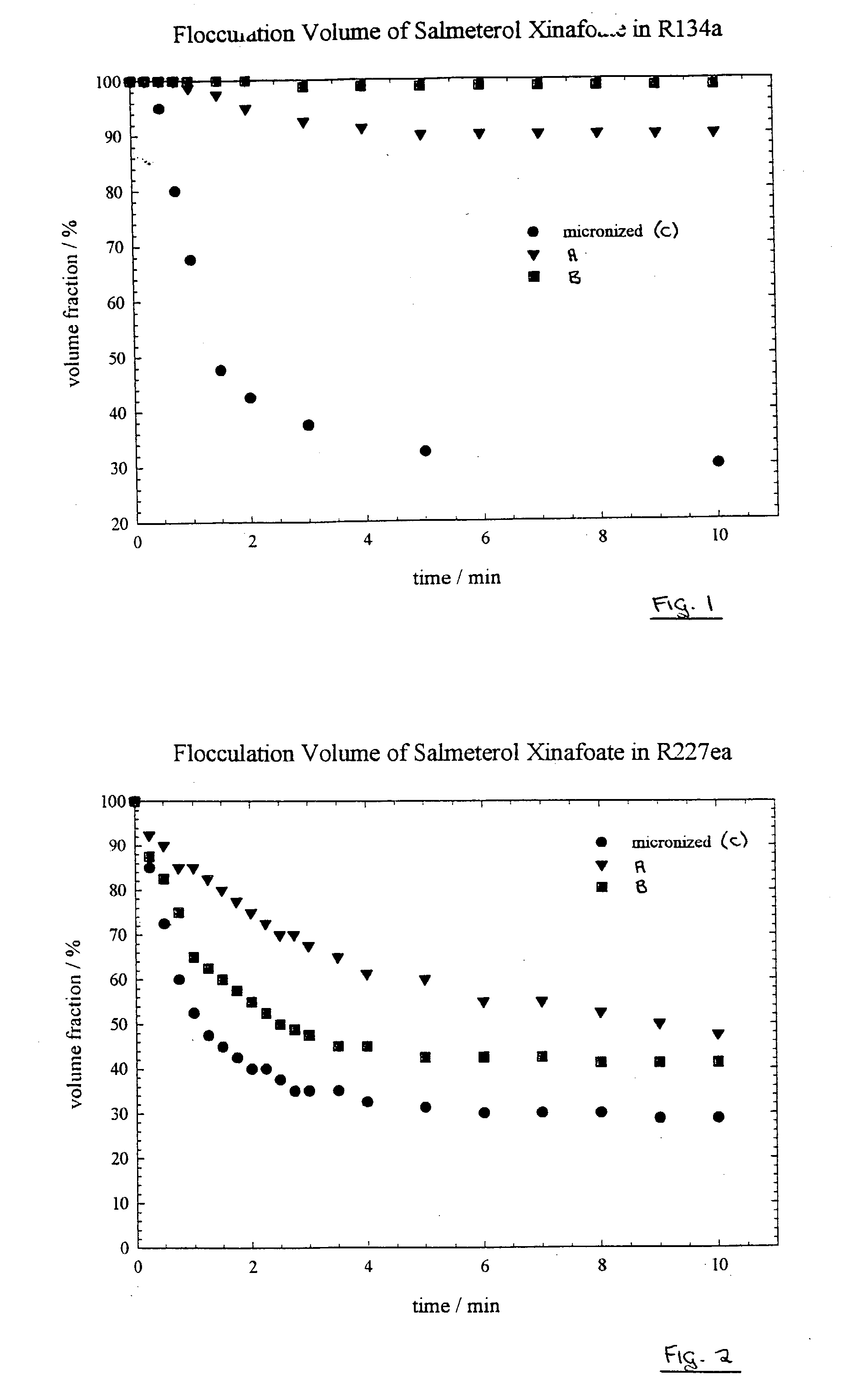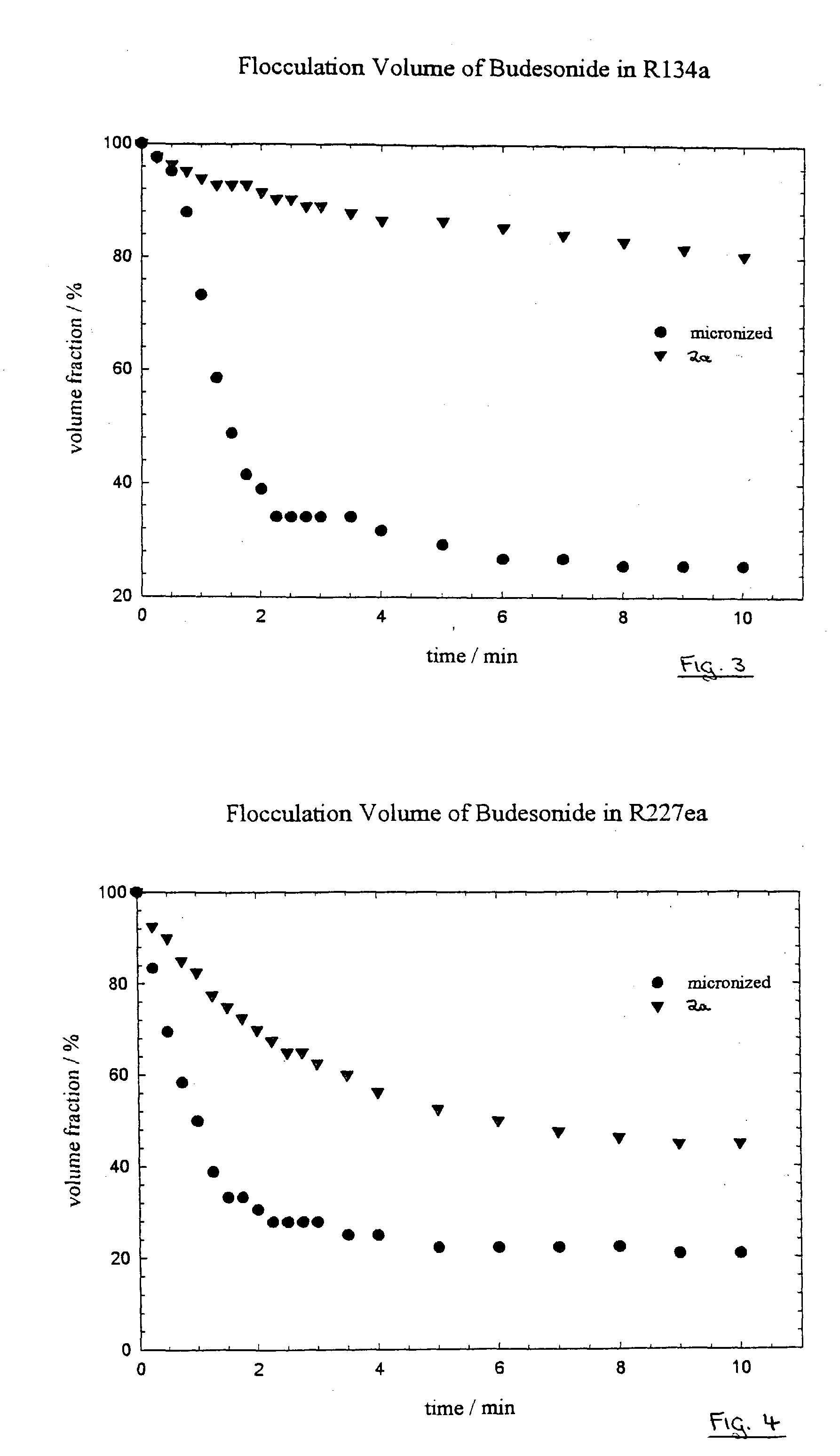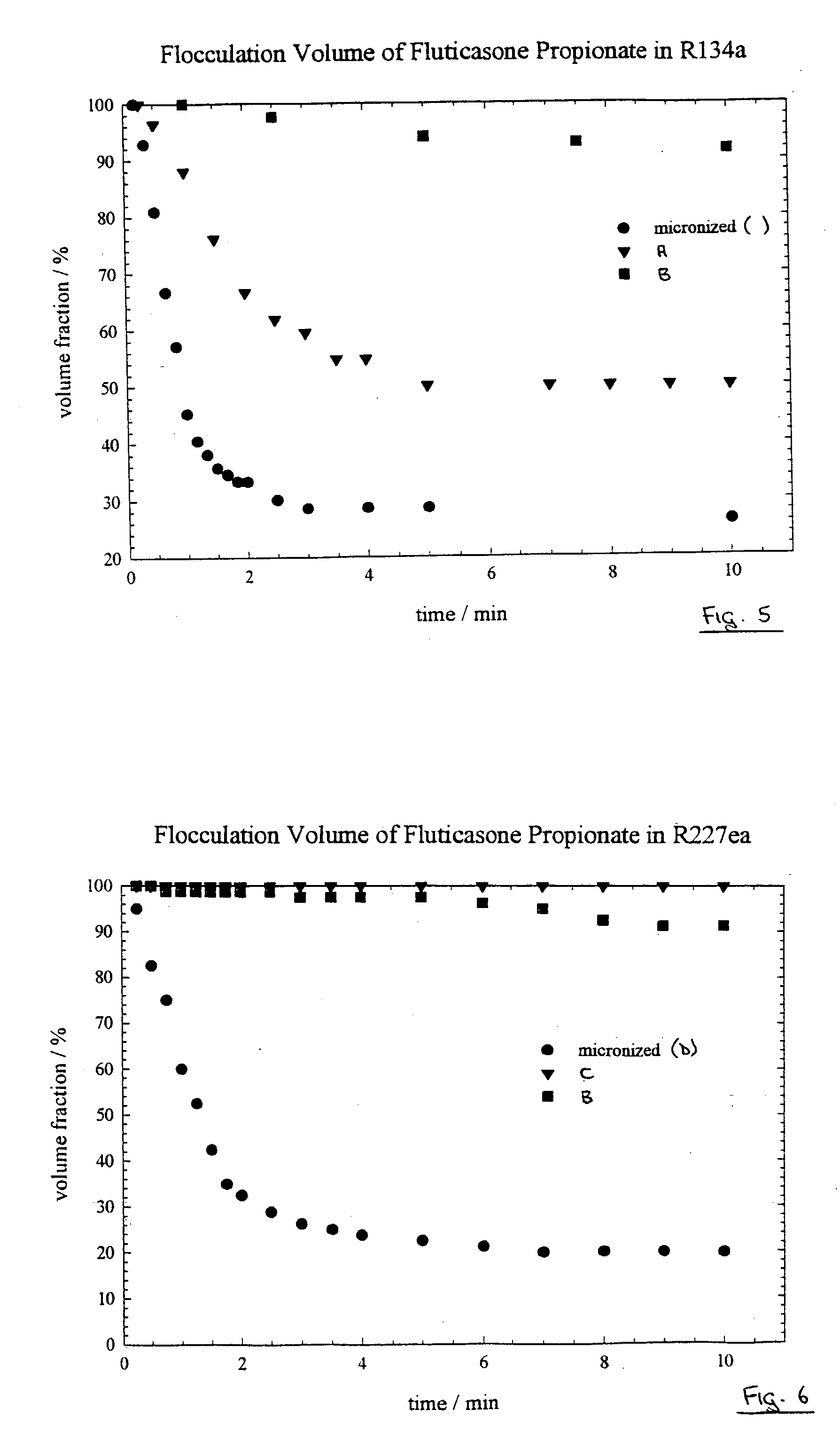Particulate materials
a technology of particle suspension and suspension, which is applied in the direction of dispersion delivery, bandages, microcapsules, etc., can solve the problems of reducing the efficiency and therefore also accuracy of drug dosage delivery, difficult to prepare inhalable suspensions, and only stable particle drug/propellant suspensions for limited periods of tim
- Summary
- Abstract
- Description
- Claims
- Application Information
AI Technical Summary
Problems solved by technology
Method used
Image
Examples
example 1a
Preparation of Salmeterol Xinafoate
[0150] Salmeterol xinafoate (sample A) in its polymorphic form I was precipitated from methanol (2% w / v) using an operating temperature of 60.degree. C., an operating pressure of 100 bar, a nozzle with a. 200 .mu.m outlet diameter, a particle formation vessel with 50 ml capacity, a salmeterol solution flow rate of 0.4 ml / min and a CO.sub.2 flow rate of 20 ml / min (note: all CO.sub.2 flow rates were measured at the pump head). The product had a MMAD of 5.3 .mu.m (Aerosizer.TM.).
[0151] A further sample (B) of salmeterol xinafoate form I was made by a modified SEDS.TM. process, as described in WO-03 / 008082, in which the salmeterol solution and CO.sub.2 were introduced through an inlet tube and a perpendicularly orientated nozzle (outlet diameter 200 .mu.m) respectively, with a CO.sub.2 flow rate sufficient for it to acquire a sonic velocity at the nozzle outlet. For this particle formation process the salmeterol / methanol solution concentration was 3% w...
example 1b
Flocculation Performance of Salmeterol Xinafoate
[0152] The flocculation performance of the products of Example 1a (samples A and B) was tested in the propellants HFA 134a (less dense than salmeterol xinafoate) and HFA 227ea (more dense), in each case over a 10 minute period. Also tested, under the same conditions, was a sample C of salmeterol xinafoate form I (MMAD 1.1 .mu.m by Aerosizer.TM.) made by a standard micronisation process.
[0153] FIG. 1 shows the time variation in flocculation volume of the three samples in HFA 134a, expressed as a percentage of the initial volume. The performance of both SEDS.TM. produced samples (ie, products according to the present invention) was clearly superior to that of the micronised sample, which after 3 minutes had a flocculation volume below 40% and after 10 minutes of only 30%. The SEDS.TM. samples retained, even after 10 minutes, a flocculation volume of 90% or greater, in the case of sample B greater than 98%.
[0154] Sample B was found to ret...
example 2a
[0158] Example 2a
Preparation of Budesonide
[0159] Budesonide was precipitated from acetone (2% w / v) at 70.degree. C. and 100 bar. The budesonide solution flow rate was 12.6 ml / min and the CO.sub.2 flow rate 833 ml / min. A nozzle with an 800 .mu.m outlet was used. The product MMAD was 1.65 .mu.m (Aerosizer.TM.).
PUM
| Property | Measurement | Unit |
|---|---|---|
| mass median aerodynamic diameter | aaaaa | aaaaa |
| mass median aerodynamic diameter | aaaaa | aaaaa |
| mass median diameter | aaaaa | aaaaa |
Abstract
Description
Claims
Application Information
 Login to View More
Login to View More - R&D
- Intellectual Property
- Life Sciences
- Materials
- Tech Scout
- Unparalleled Data Quality
- Higher Quality Content
- 60% Fewer Hallucinations
Browse by: Latest US Patents, China's latest patents, Technical Efficacy Thesaurus, Application Domain, Technology Topic, Popular Technical Reports.
© 2025 PatSnap. All rights reserved.Legal|Privacy policy|Modern Slavery Act Transparency Statement|Sitemap|About US| Contact US: help@patsnap.com



